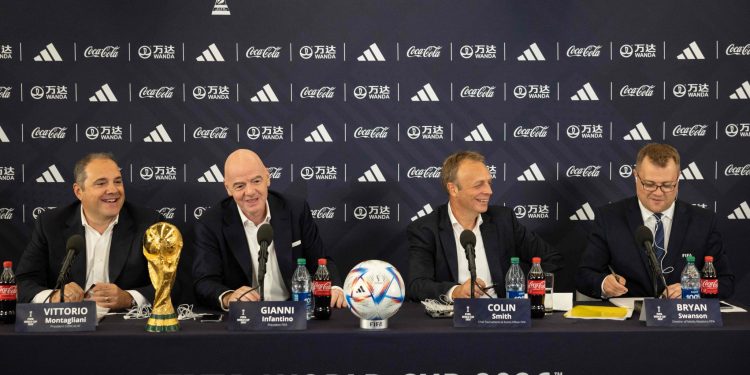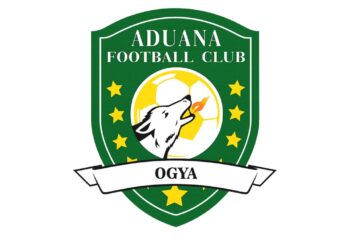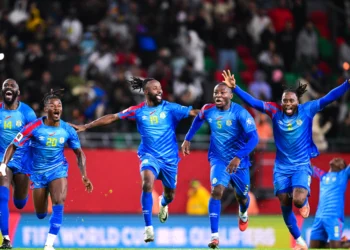FIFA announced on Wednesday the 16 North American cities that will host matches for the 2026 World Cup, with 11 venues chosen in the United States, three in Mexico and two in Canada.
The 2026 World Cup will be the first tournament hosted by three nations and also the first that will expand to 48 teams in the competition.
The cities officially selected to host World Cup matches in the U.S. are: New York/New Jersey (MetLife Stadium); Los Angeles (SoFi Stadium); Dallas (AT&T Stadium); San Francisco Bay Area (Levi’s Stadium); Miami (Hard Rock Stadium); Atlanta (Mercedes-Benz Stadium); Seattle (Lumen Field); Houston (NRG Stadium); Philadelphia (Lincoln Financial Field); Kansas City, Missouri (Arrowhead Stadium); and Boston (Gillette Stadium).
The host of the 1994 World Cup final, the Rose Bowl, was not chosen, with another Los Angeles area venue, SoFi Stadium, being picked instead.
“It was the most competitive process ever for the FIFA World Cup,” FIFA president Gianni Infantino told Fox Sports about the selection process. “We will be working in clusters, making sure that the teams and the fans don’t have to travel too much in different areas: West, Central and East.”
The cities officially selected to host World Cup matches in Mexico and Canada are: Guadalajara (Estadio Akron), Monterrey (Estadio BBVA Bancomer), Mexico City (Estadio Azteca), Toronto (BMO Field) and Vancouver (BC Place).
“It’s a historic day for U.S. Soccer and the entire American soccer community, from every corner of our grassroots all the way to the pros and our National Teams,” U.S. Soccer president Cindy Parlow Cone said in a statement. “Together with our good friends in Canada and Mexico, we couldn’t be more excited to work with FIFA to host what we think will be the greatest World Cup in history.
“I want to congratulate all the bid cities that will host games. I know you will all do a fantastic job of sharing your world class stadiums, unique communities and culture, and amazing fans when the world comes to the North America in four years.”
The following candidates missed out on selection: Baltimore/Washington (M&T Bank Stadium); Orlando, Florida (Camping World Stadium); Cincinnati (Paul Brown Stadium); Nashville, Tennessee (Nissan Stadium); Denver (Empower Field at Mile High); and Edmonton (Commonwealth Stadium).
“It’s been an incredibly competitive process. All the cities have been amazing, this was a very, very difficult choice,” FIFA’s Chief Competitions & Events Officer, Colin Smith, said.
“You can’t imagine a World Cup coming to the U.S. and the capitol city not taking a major role, as well. We’ll be engaging with all of the cities that weren’t chosen to host matches. There are still lots of other areas of cooperation and working together and celebration. We know what a fan fest on the National Mall would be like.”
From the original “United 2026” bid from the three nations, 60 games are set to be played in the United States, while Mexico and Canada will each get 10 matches. Once the tournament reaches the quarterfinal stage, all remaining knockout round games will be held in the U.S.
Originally starting with candidates from 44 cities and 49 stadiums across North America, the process to select venues began in 2017. Potential applicants were asked to “provide information about each city’s transportation infrastructure, past experience hosting major sporting and cultural events, available accommodations, environmental protection initiatives, potential venues and more,” which also included possible training sites, base camps and other considerations.
By March 2018, just a few months before the United 2026 bid was officially given the rights by FIFA to host the 2026 World Cup, the list of North American candidates was narrowed down to 23. Not making the list were areas such as Chicago, Minneapolis and Arizona, due to what city officials described as issues with FIFA’s financial demands.
Other noteworthy cities left out of the 23-venue list from 2018 were Charlotte, North Carolina; Detroit; Las Vegas; Salt Lake City and Tampa, Florida. Vancouver, initially out of the running after disagreements over financing, eventually replaced Montreal after it dropped out in 2021 when the provincial government withdrew its support.
A FIFA delegation, led by CONCACAF president and FIFA vice president Victor Montagliani, conducted visits of all candidate host cities at the end of 2021.
The joint bid between Baltimore and Washington at M&T Bank Stadium was announced this April after FedEx Field in Landover, Maryland, dropped out of the running and opted to merge with the Baltimore bid. Under the proposal, there would have been a fan festival on Washington’s National Mall.
With the Rose Bowl not selected, none of the U.S. venues from the 1994 men’s World Cup will be utilized for the 2026 edition of the tournament.
Five of the 2026 World Cup cities — Boston, Dallas, Los Angeles, New York/New Jersey and the San Francisco Bay Area — were among nine of the 1994 venues, while another five — Atlanta, Kansas City, Miami, Philadelphia and Seattle — were on the shortlist in 1994, but did not make the cut.
When asked if this was bigger than winning the hosting rights for a Super Bowl, Cowboys owner and general manager Jerry Jones said: “Candidly, I think it’s broader interest from the perspective of Dallas. The longer I’m in sport, the more I realize how important soccer is to this world. To be able to participate in such an event is … really awesome and inspiring.”
In 1994, the Cotton Bowl hosted World Cup matches. When the Cowboys first thought of building a new stadium, they did so with the idea of hosting large events. AT&T Stadium has hosted a Super Bowl, the NCAA Final Four, the College Football Playoff Championship, an NBA All-Star Game and numerous major boxing matches.
“When we built the stadium, it was to have great, great events,” Jones said. “And it wasn’t just American Football.”










Discussion about this post